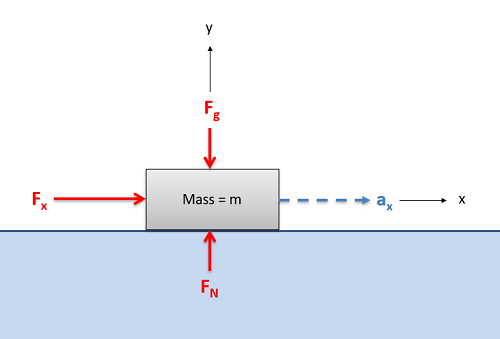The Equation of Motion in One Dimension
Kinetics is the branch of dynamics that deals with the relationship between motion and the forces that cause that motion. The basis for all of kinetics is Newton's Second Law, which relates forces and accelerations for a given body. In its basic form, Newton's Second Law states that the sum of the forces on a body will be equal to mass of that body times the rate of acceleration. For bodies in motion, we can write this relationship out as the equation of motion.
| \[\sum \vec{F}=m*\vec{a}\] |
In cases where accelerations only exist in a single dimension, we can reduce the above vector equation into a single scalar equation. Calling that single direction the x direction, we arrive at the single equation of motion shown below. By entering known forces or accelerations, we can use this equation to solve for a single unknown force or acceleration term.

| \[\sum F_{x}=m*a_{x}=m*\ddot{x}\] |
Kinetics and the equation(s) of motion relate forces and accelerations, and are often used in conjunction with the kinematics equations, which relate positions, velocities and accelerations as discussed in the previous chapter. Depending on the problem being examined, the kinematics equations may need to be examined either before or after the kinetics equations.



